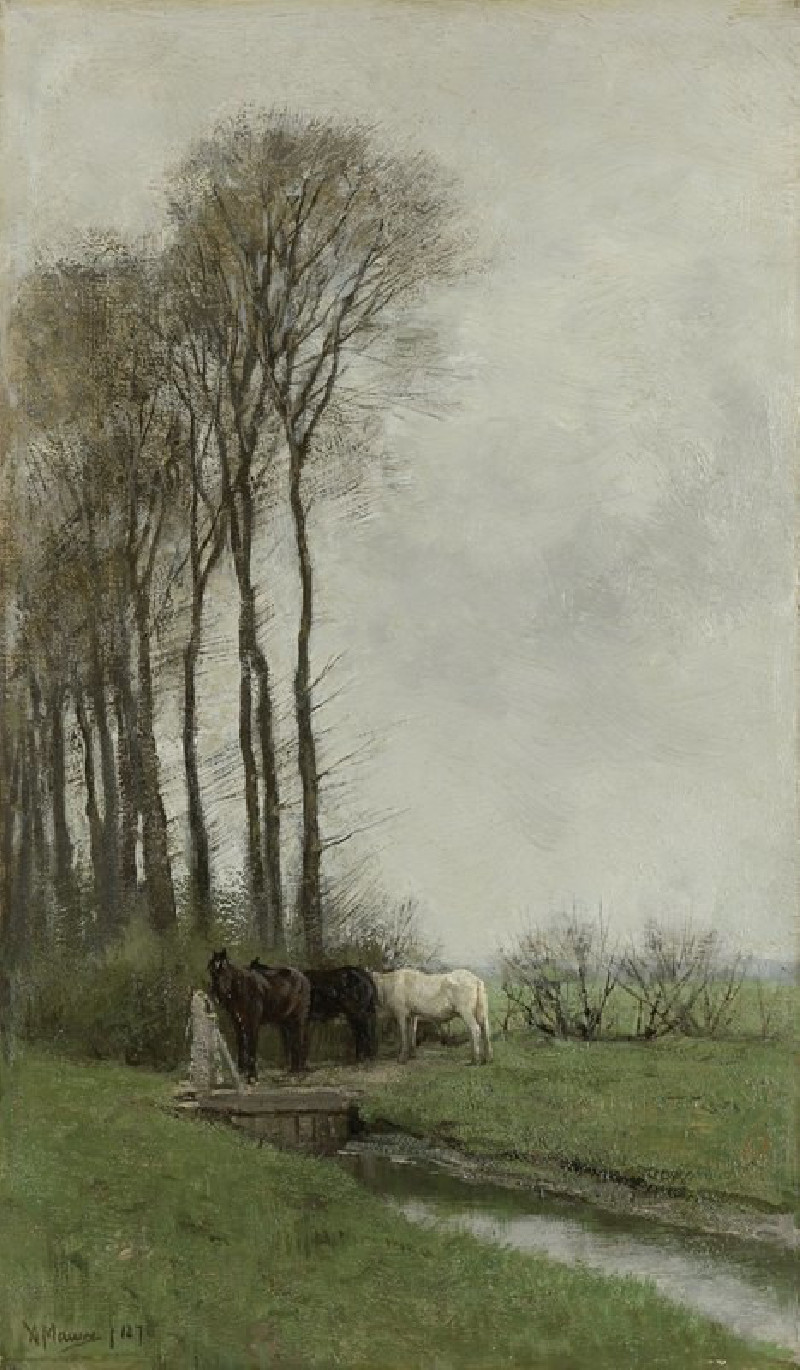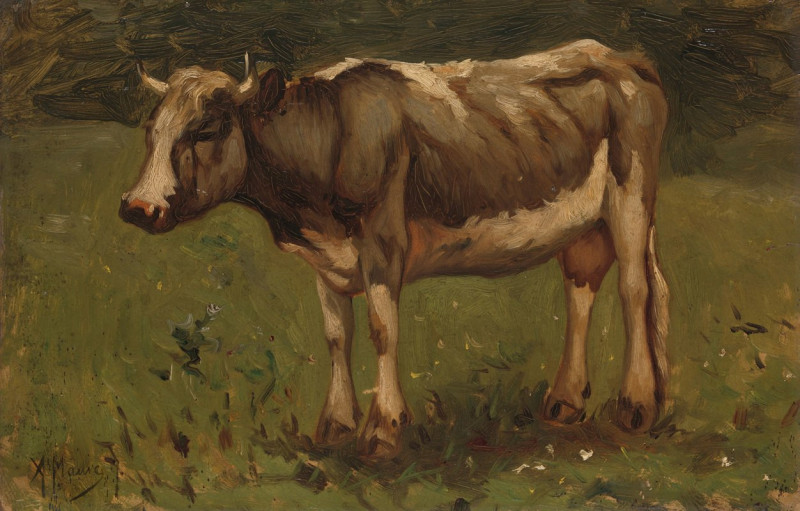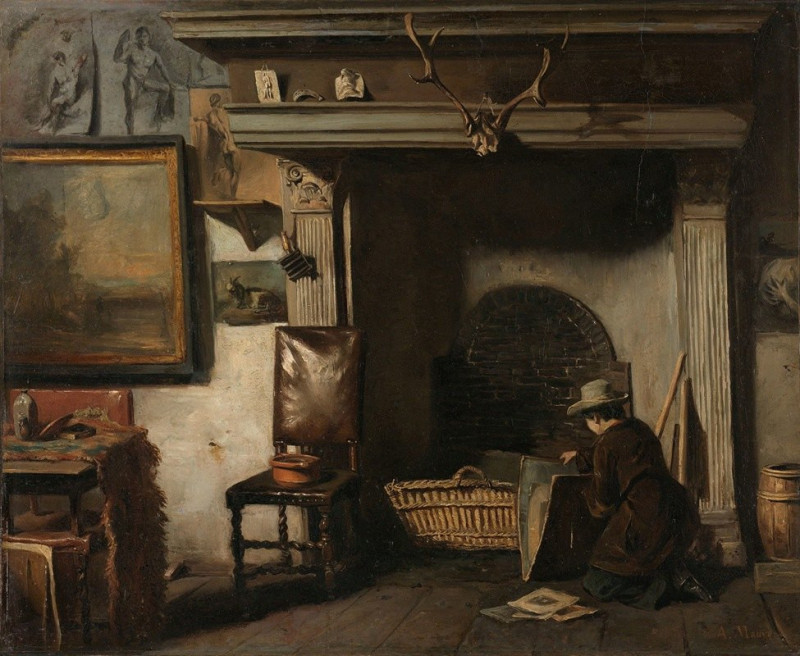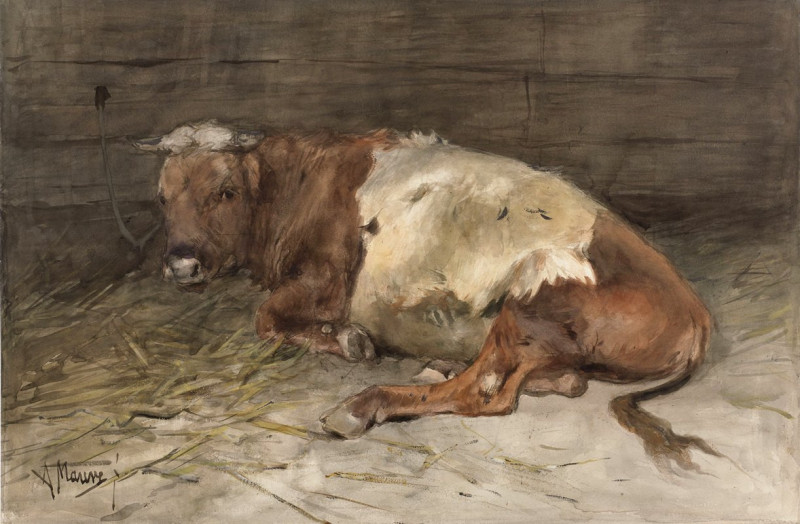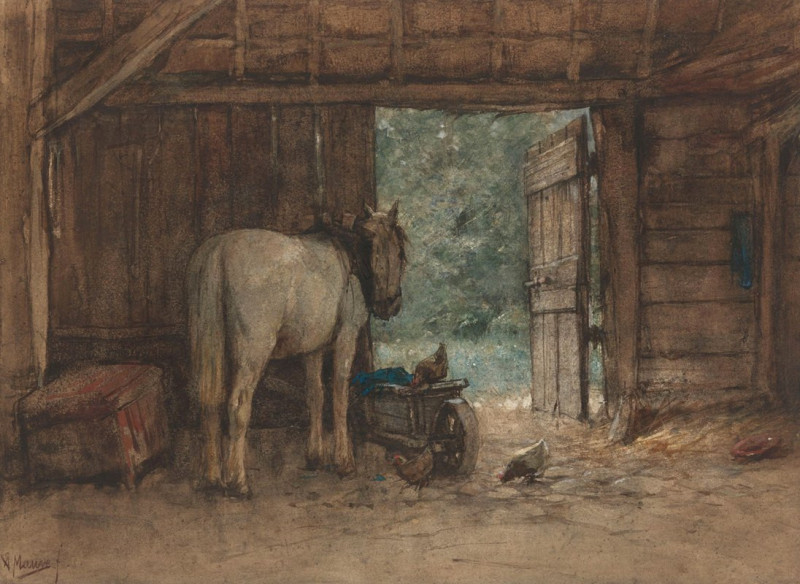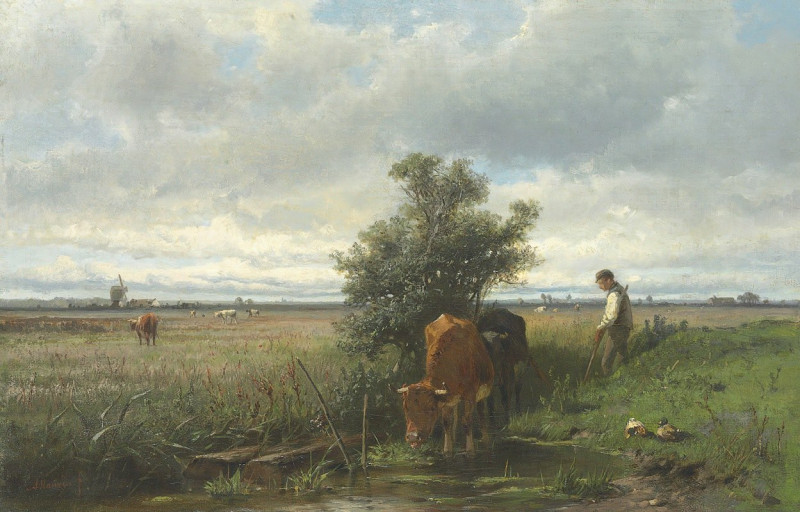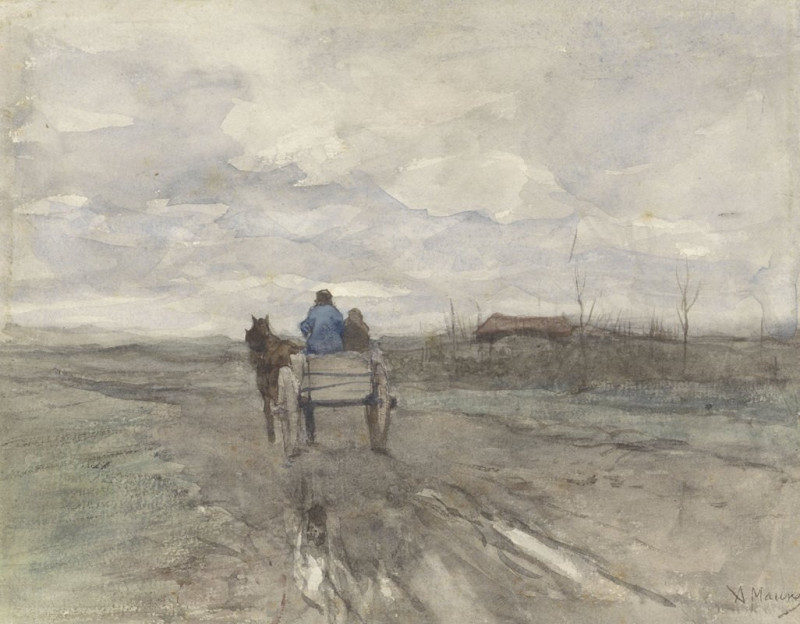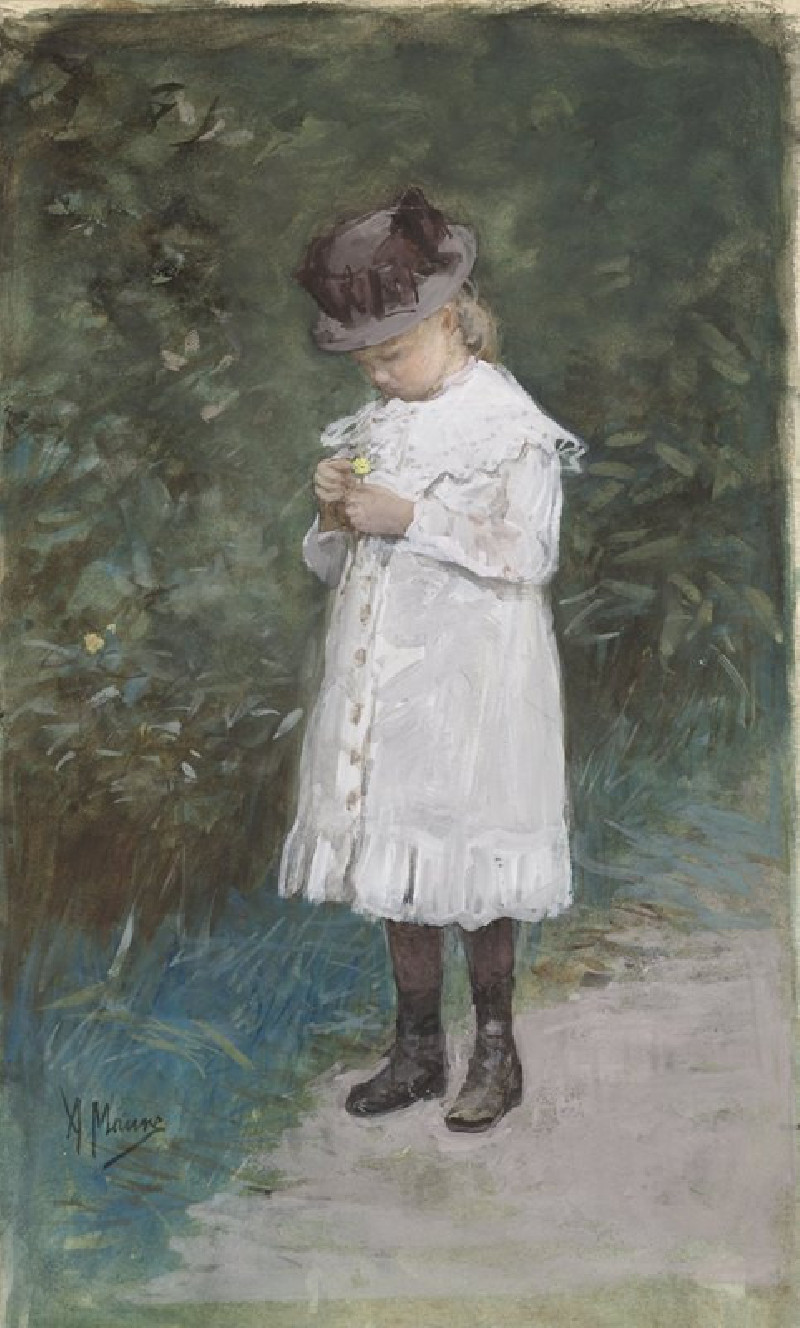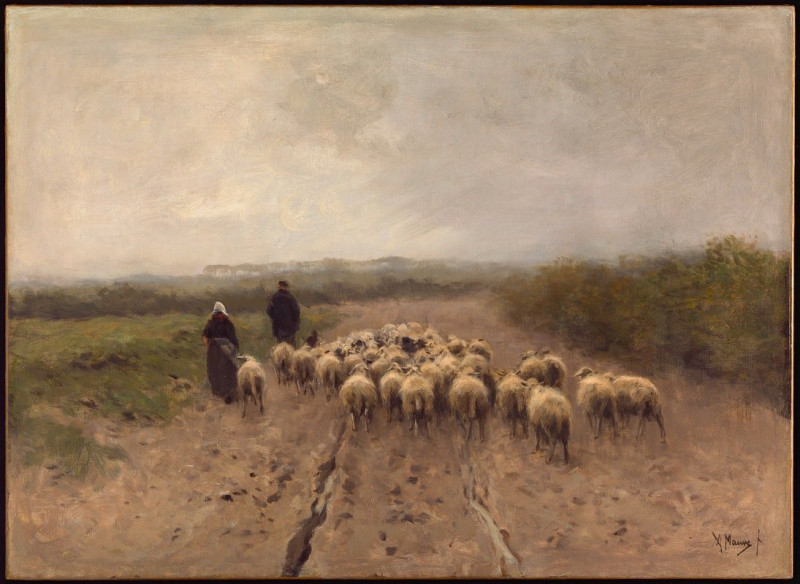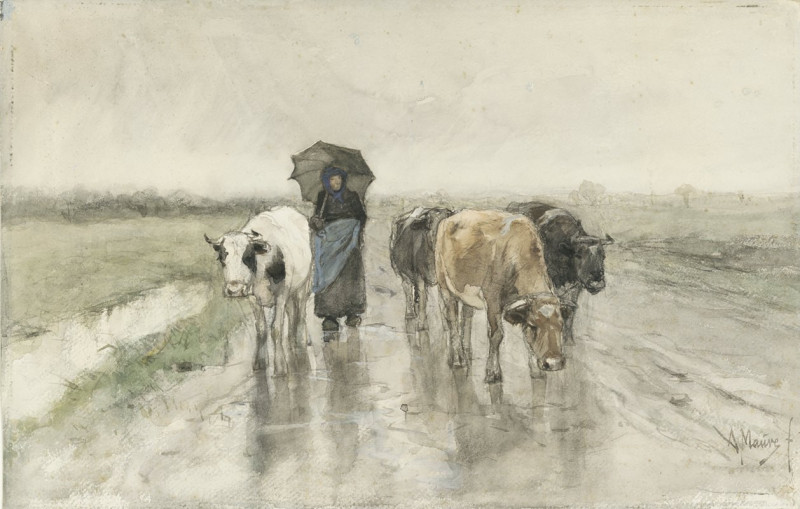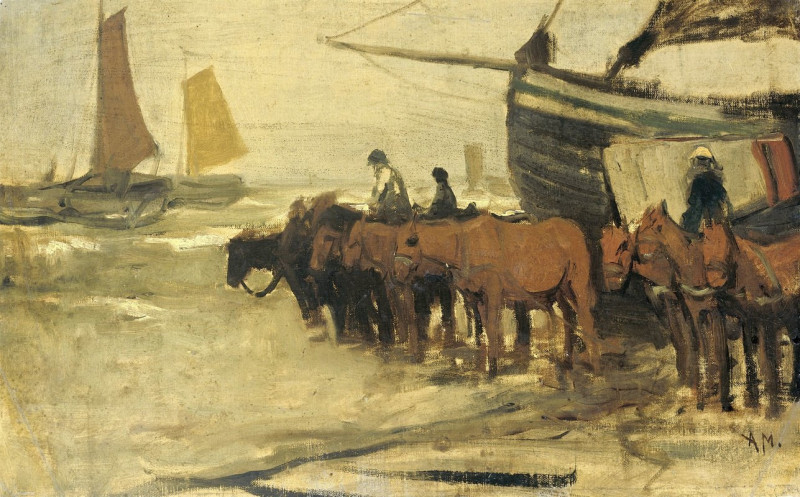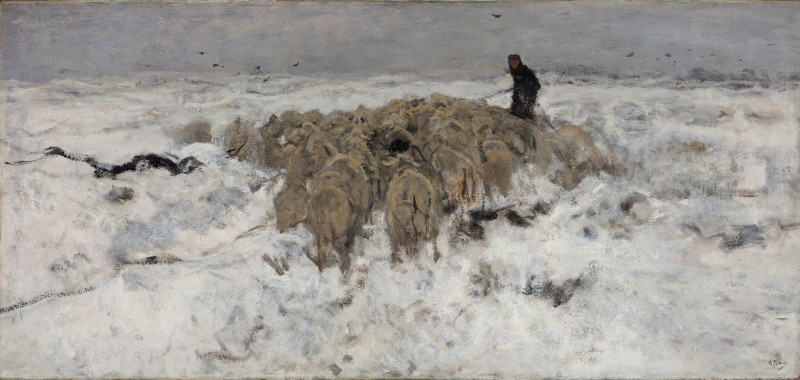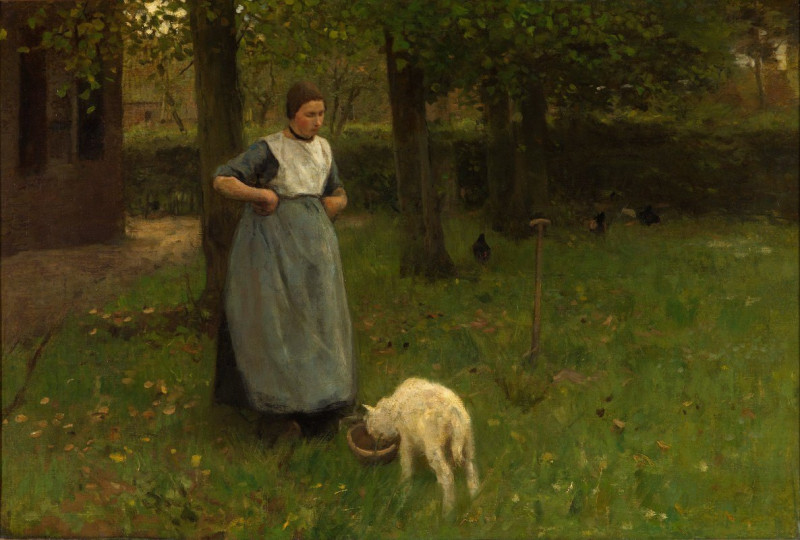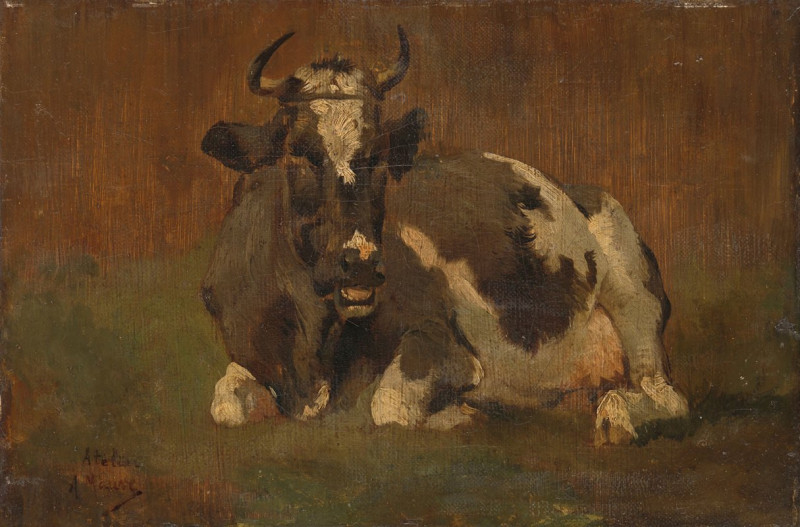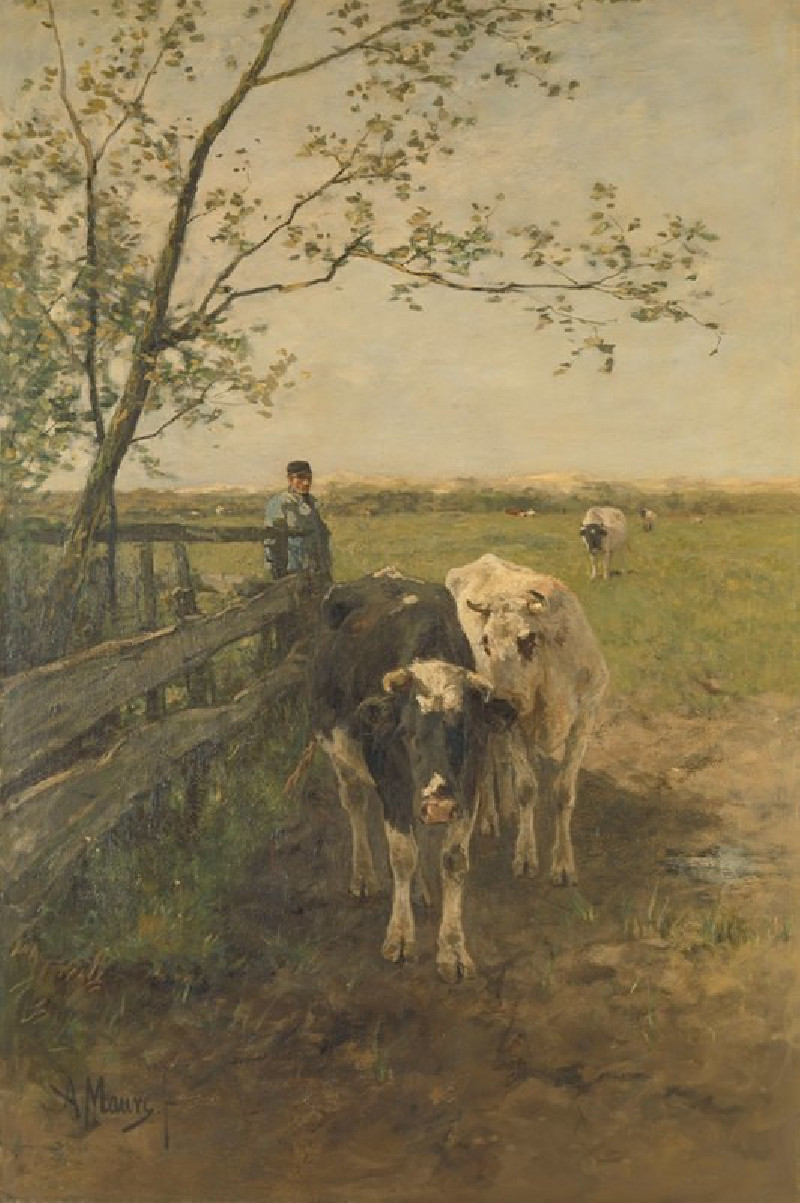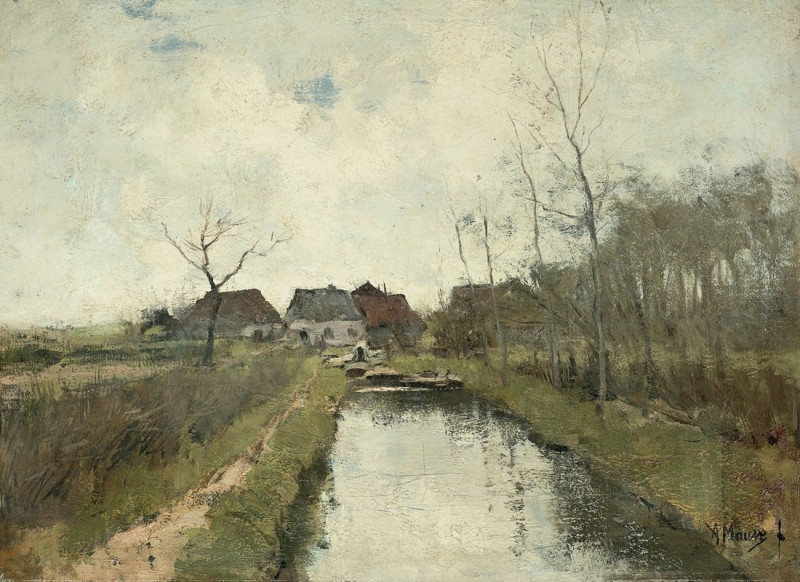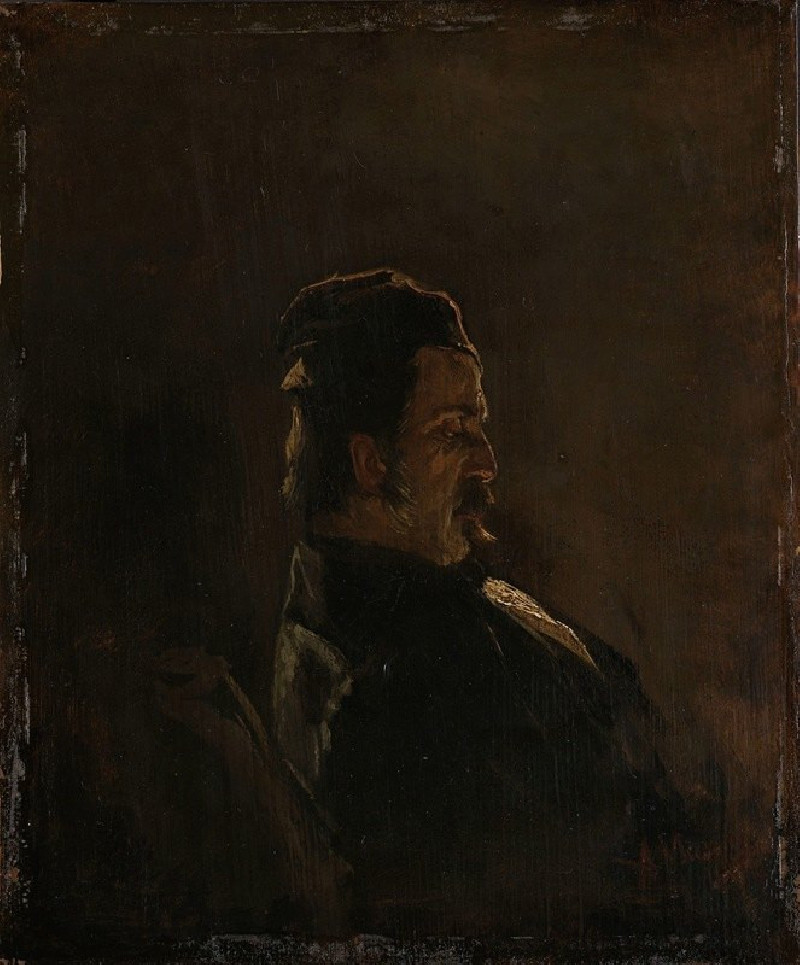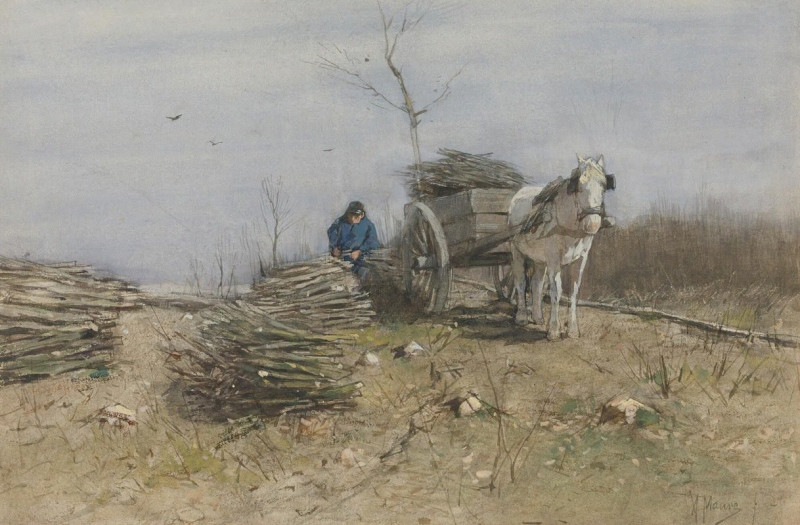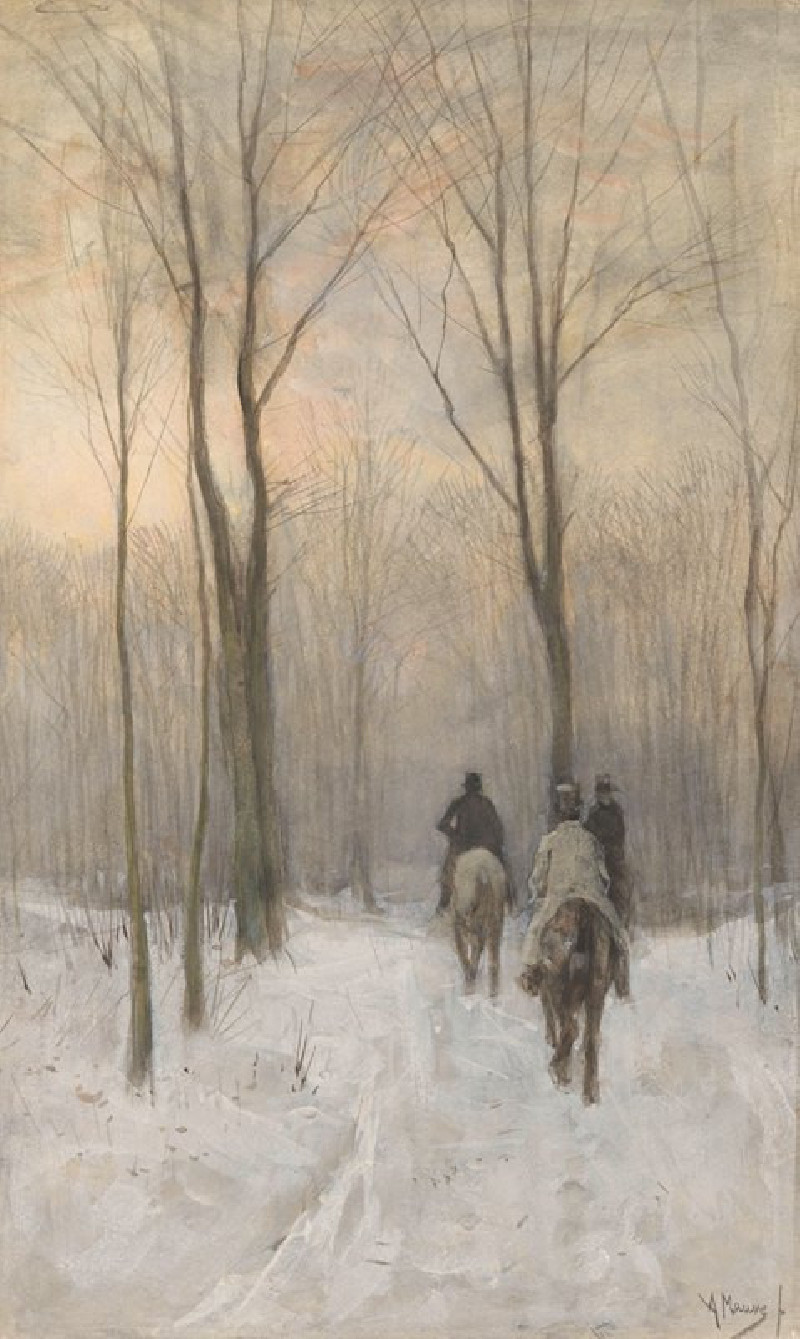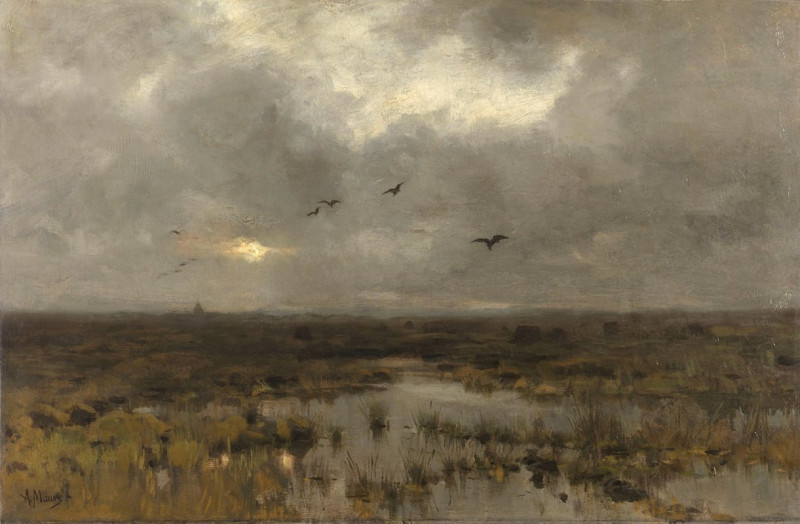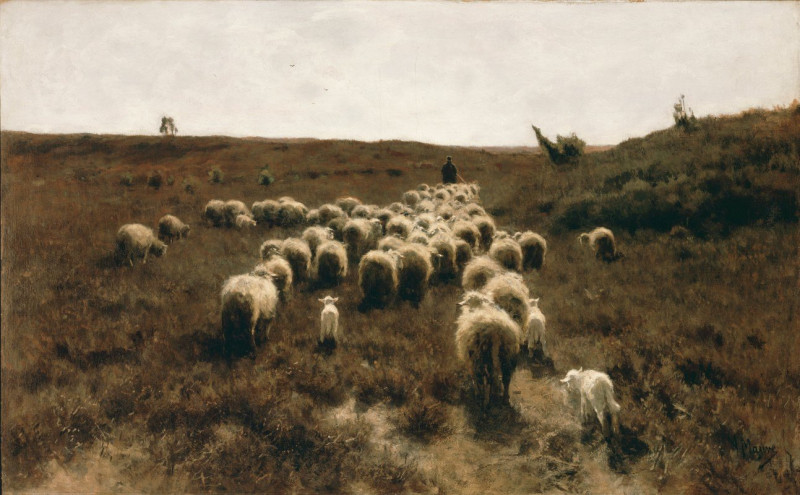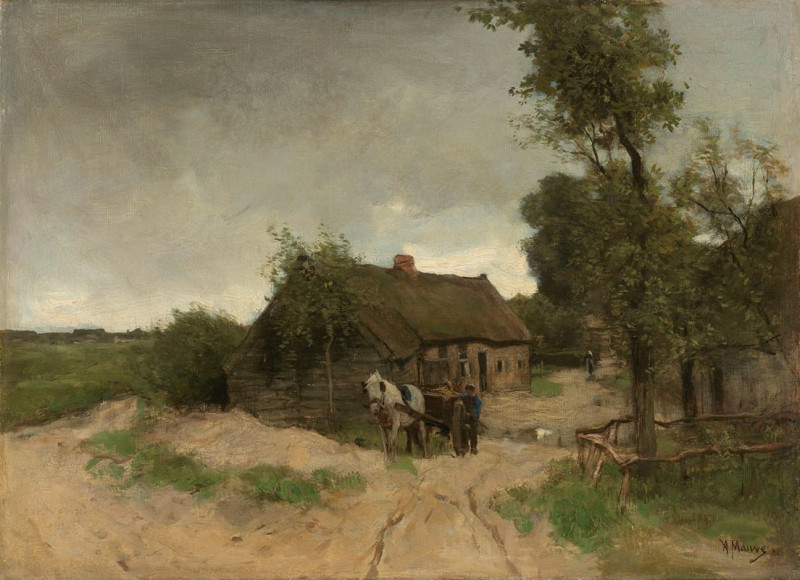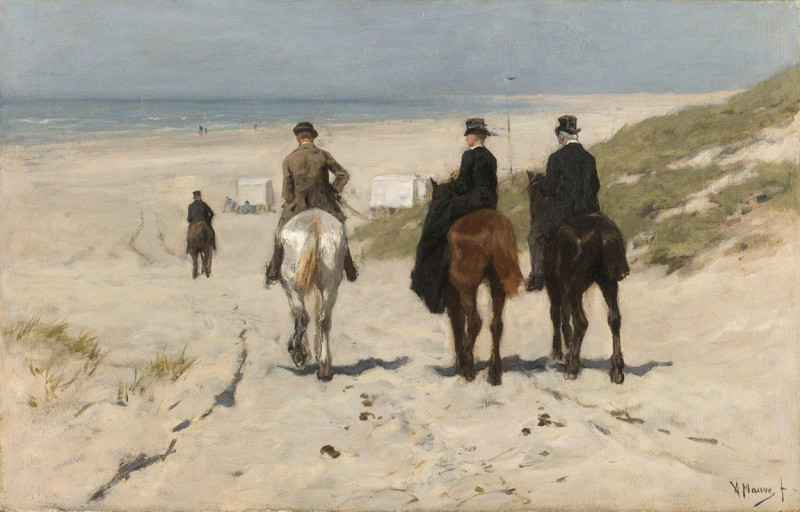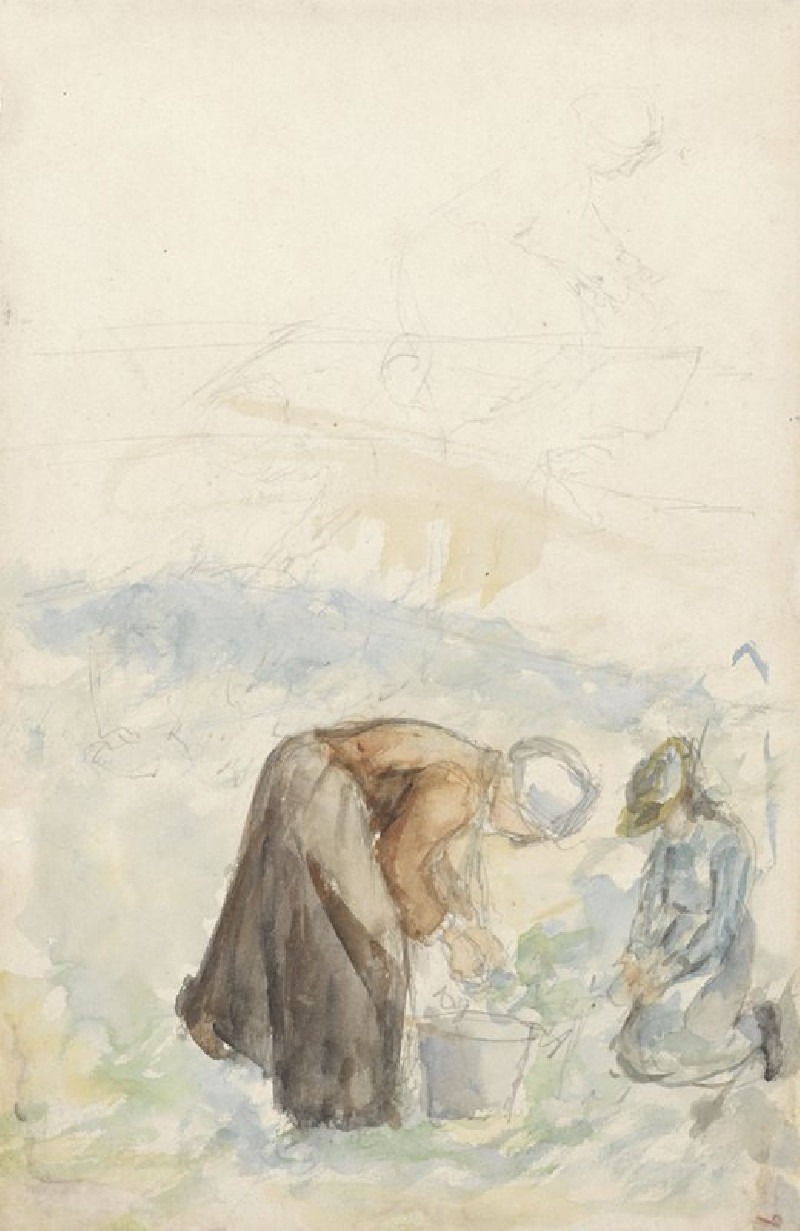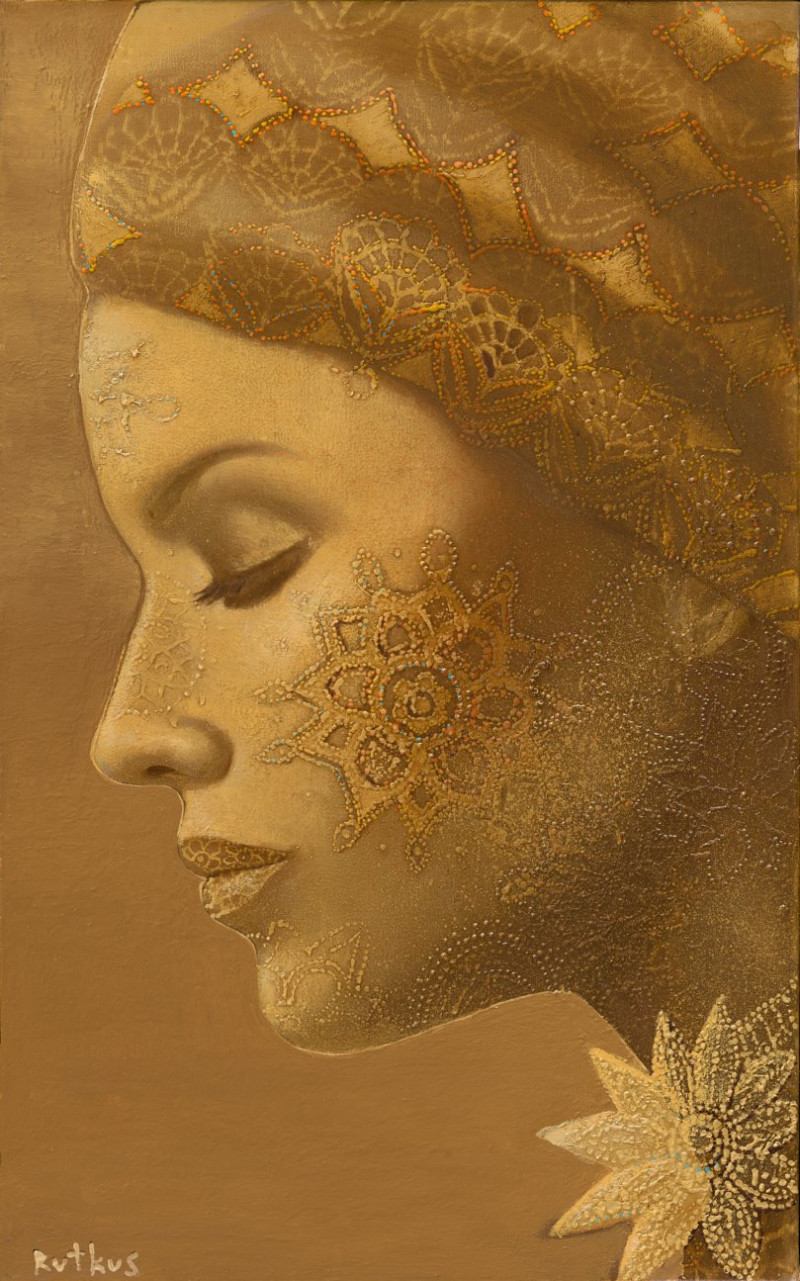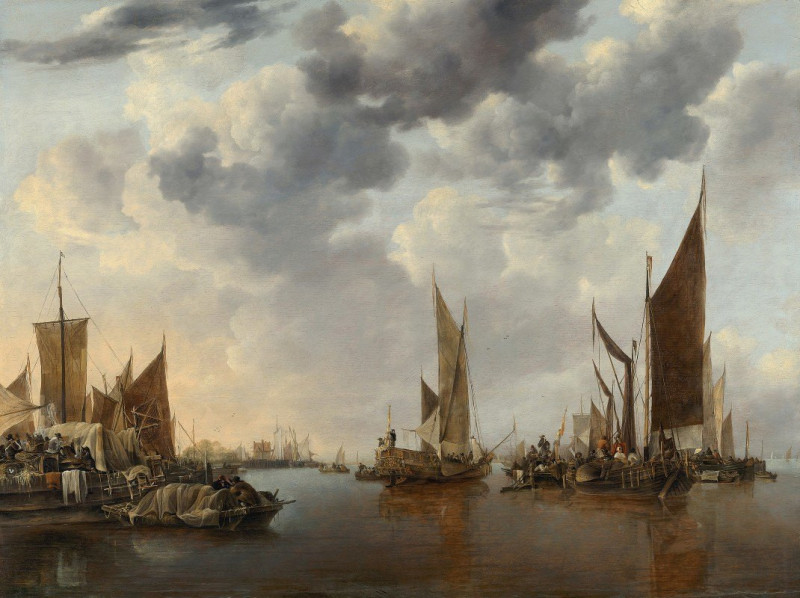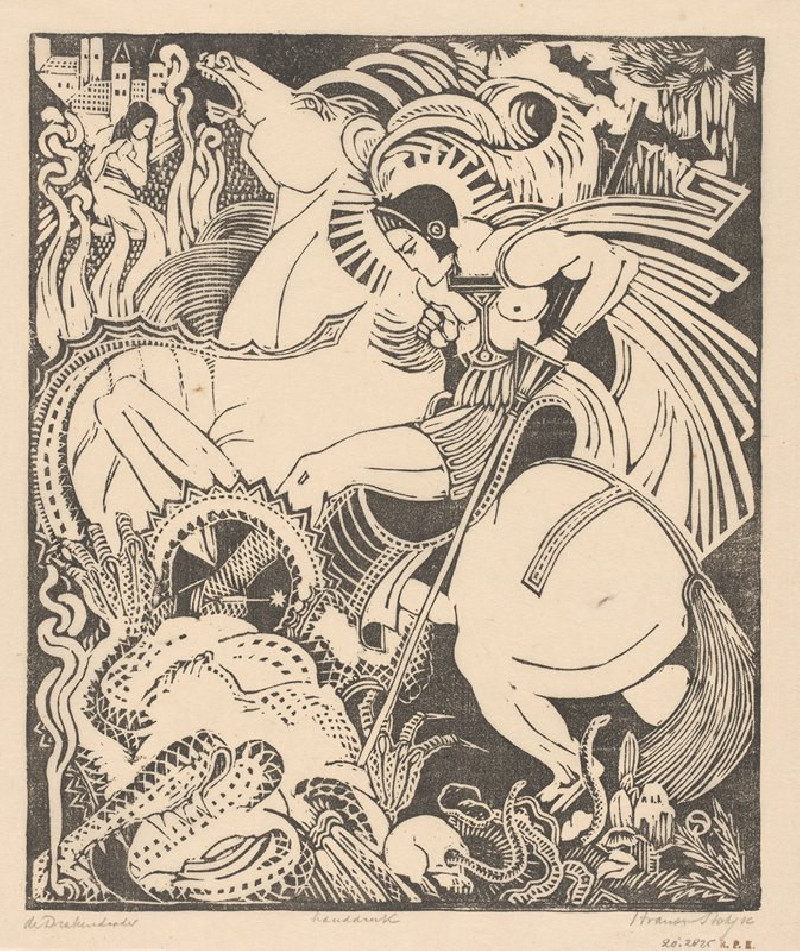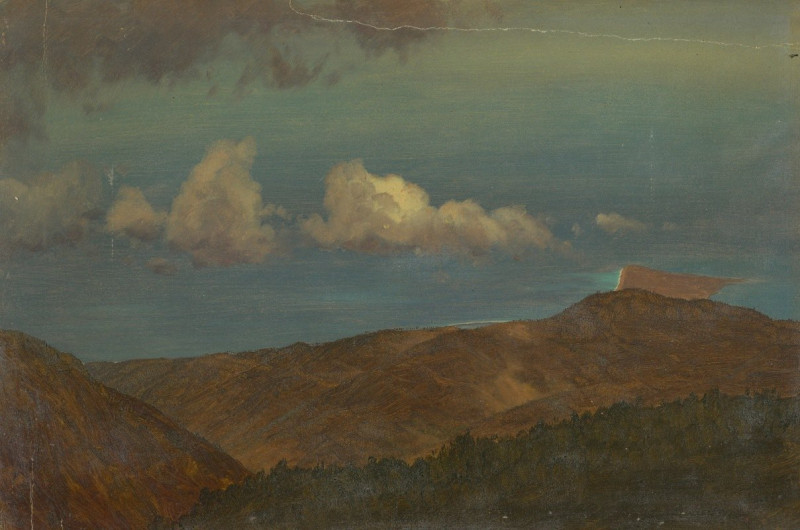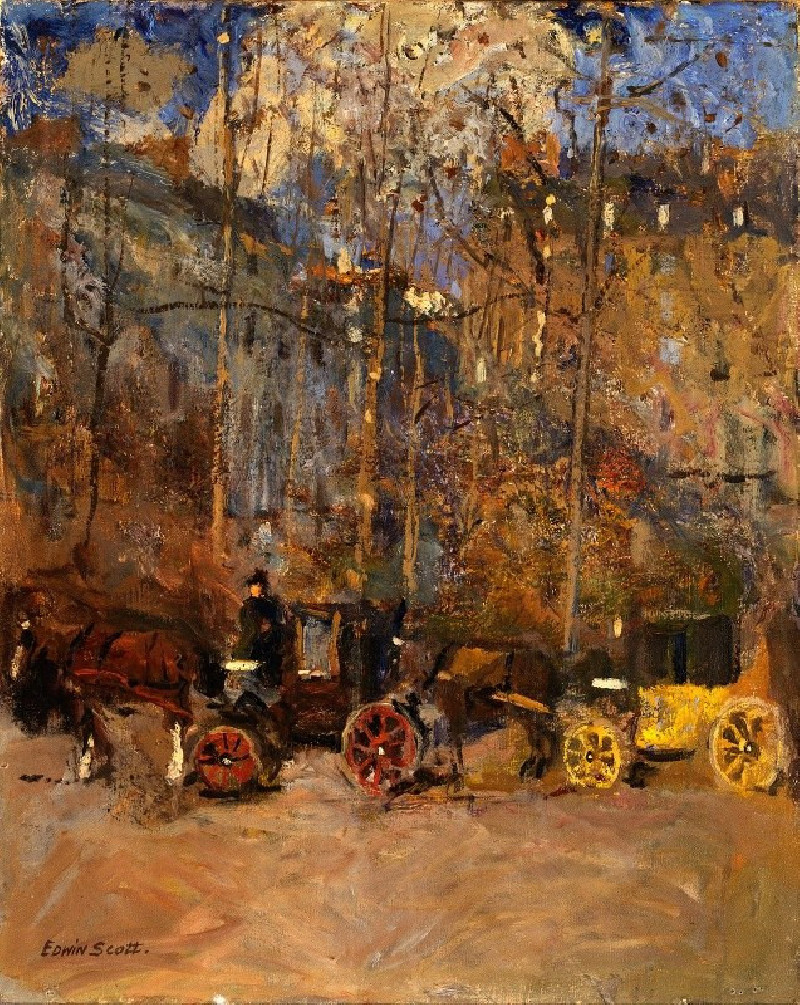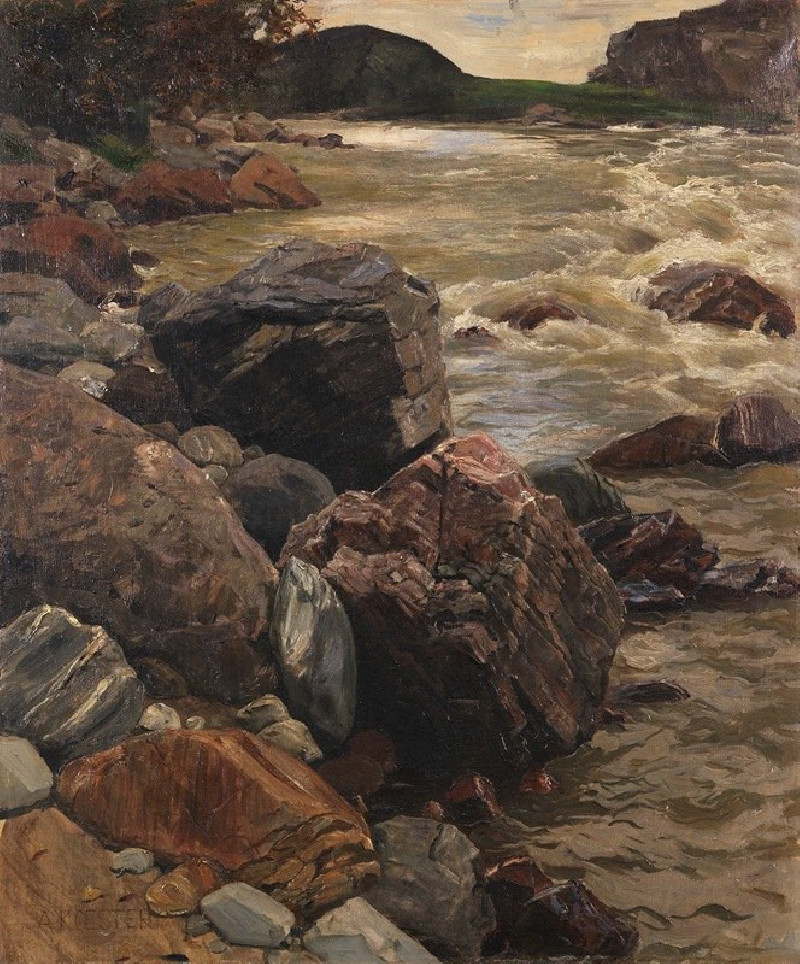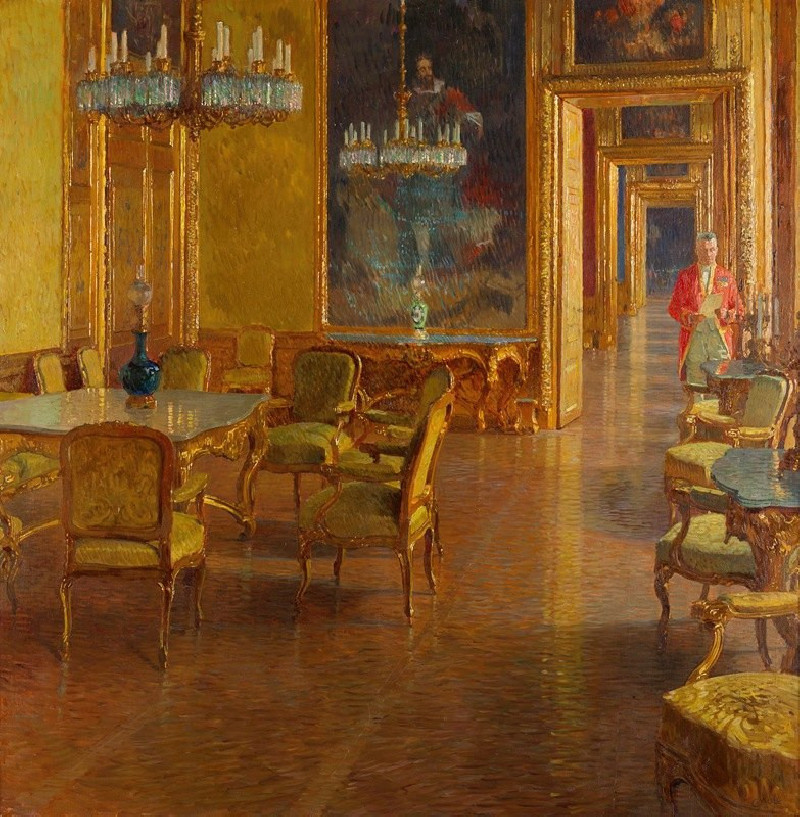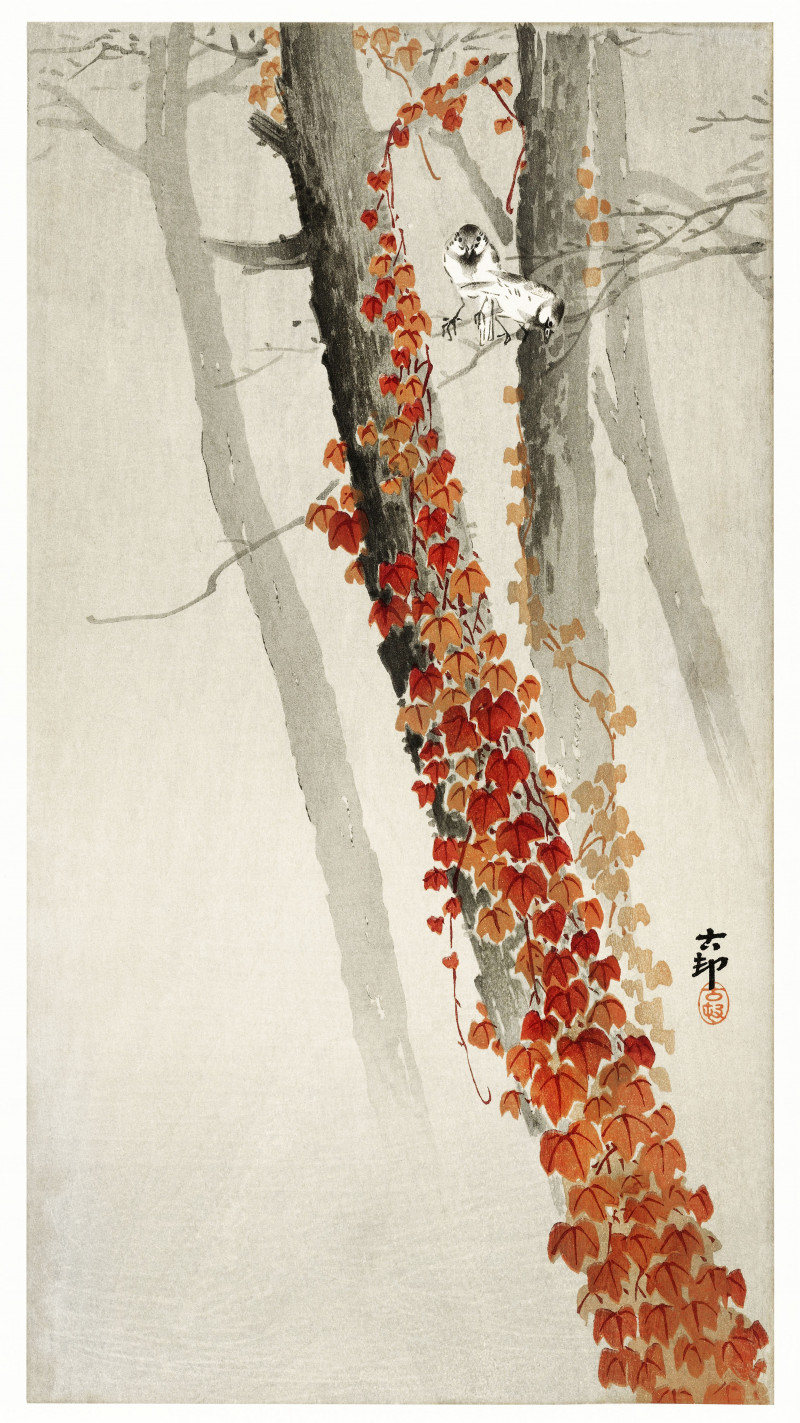Paarden bij het hek (1878)
Technique: Giclée quality print
Recommended by our customers
More about this artwork
Dive into the serene Dutch countryside through the exquisite creation of renowned Hague School artist Anton Mauve with his painting titled "Paarden bij het hek" ("Horses by the Gate"). Painted in 1878, this masterpiece showcases Mauve's signature style of soft, delicate hues and masterful play of light, which together evoke a gentle, pastoral ambiance.In this vertically oriented painting, Mauve beautifully captures a quiet moment in a rural setting. Three horses, each with distinct colorings of brown and white, are depicted beside a small wooden gate. The horses stand calmly, seemingly at ease in their natural surroundings, nestled by a narrow waterway—a typical feature in Dutch landscapes that adds to the feeling of tranquility and the connection between land and water.The background features tall, slender trees, their bare branches reaching towards a subdued, cloudy sky, suggesting the coolness of early spring or late autumn. The soft, muted tones of the background contrast gently with the more defined figures of the horses, bringing them into the gentle focus of the composition."Paarden bij het hek" is not just a visual treat; it is an invitation to appreciate the quieter, understated beauty of everyday rural life. Mauve's skill in rendering the texture of the horses' coats and the delicate reflections in the water adds layers of depth to this peaceful scene.This painting is a testament to Anton Mauve's ability to convey emotion and atmosphere, inviting viewers to step into a moment of peaceful contemplation.
Delivery
Returns
Anthonij "Anton" Rudolf Mauve (18 September 1838 – 5 February 1888) was a Dutch realist painter who was a leading member of the Hague School. He signed his paintings 'A. Mauve' or with a monogrammed 'A.M.'. A master colorist, he was a very significant early influence on his cousin-in-law Vincent van Gogh.
His best-known paintings depict peasants working in the fields. His paintings of flocks of sheep were especially popular with American patrons, so popular that a price differential developed between scenes of "sheep coming" and "sheep going".

